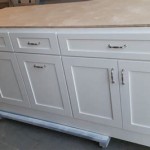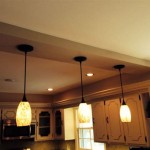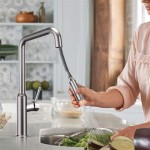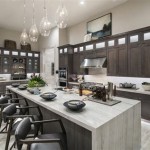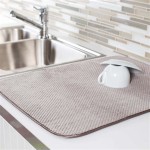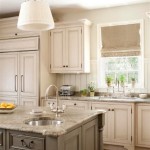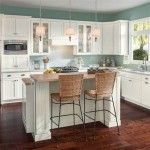Typical Depth of Kitchen Worktops: A Comprehensive Guide
Kitchen worktops, also known as countertops, are a fundamental element of kitchen design and functionality. They provide a durable and hygienic surface for food preparation, appliance placement, and general kitchen tasks. One of the most critical factors in selecting a worktop is its depth. This article will explore the typical depth dimensions of kitchen worktops, examining the reasons behind these standards and their impact on kitchen ergonomics and aesthetics.
The depth of a kitchen worktop refers to the distance from the front edge to the back edge, usually measured in millimeters or inches. This dimension significantly influences the usable surface area and the ease with which tasks can be performed. While variations exist based on design preferences and specific kitchen layouts, industry standards generally dictate a range of depths that provide optimal functionality and ergonomic comfort.
Understanding these standards is crucial for homeowners, kitchen designers, and contractors alike. Proper worktop depth ensures that individuals can comfortably reach and utilize the workspace without straining or compromising posture. Furthermore, adhering to standard depths simplifies the integration of appliances, sinks, and other kitchen fixtures, preventing installation issues and ensuring a cohesive design.
Standard Worktop Depth Dimensions
The most common depth for kitchen worktops globally typically falls within the range of 600mm to 650mm (approximately 23.6 inches to 25.6 inches). This depth is considered the industry standard due to a combination of ergonomic, functional, and aesthetic considerations. This measurement accommodates the depth of standard kitchen base cabinets while providing sufficient overhang to protect the cabinet fronts from spills and damage.
The standard depth of 600mm is often cited as the minimum acceptable depth. While it can be suitable for smaller kitchens or areas where space is limited, it may not offer the most comfortable working experience for individuals performing more complex tasks. Alternatively, a depth of 650mm provides a more generous working surface, allowing for greater flexibility in appliance placement and food preparation.
It's important to note that these dimensions typically refer to the finished depth, including any overhang or decorative edging. The actual depth of the worktop material itself may be slightly less, especially in the case of natural stone or solid surface materials where a slight amount of material is removed during fabrication and installation.
While 600mm-650mm is the most common, deviations from this standard can be found, particularly in bespoke kitchens or when incorporating specific design features. For example, kitchen islands may have greater depths to accommodate seating or additional storage. Breakfast bars are frequently deeper than standard worktops, offering more knee room for seated individuals.
Factors Influencing Worktop Depth Selection
Several factors play a role in determining the ideal worktop depth for a particular kitchen. These include the size of the kitchen, the layout, the user's height and reach, and the desired style and functionality. A careful assessment of these factors is essential to ensure that the worktop depth complements both the aesthetic and practical needs of the kitchen.
Kitchen Size and Layout: In smaller kitchens, maximizing space is paramount. A standard depth of 600mm may be preferred to avoid crowding the room. In larger kitchens, a greater depth can be accommodated without sacrificing space, allowing for increased work surface and design flexibility. The layout also influences the choice. For instance, an L-shaped or U-shaped kitchen may benefit from varying worktop depths in different areas, optimizing the use of corners and creating distinct zones for specific tasks.
User Ergonomics: The height of the primary users of the kitchen should be considered when determining the worktop depth. Individuals with shorter arms may find it difficult to reach the back of a deeper worktop, while taller individuals may find a shallower worktop cramped. A comfortable reach is crucial for preventing strain and promoting efficient workflow. The placement of sinks and hobs should also be considered in relation to the worktop depth, ensuring that they are easily accessible and do not require excessive reaching or bending.
Desired Style and Functionality: The desired style and functionality of the kitchen play a significant role in determining the worktop depth. A minimalist kitchen design may favor a sleek, shallower worktop to create a sense of spaciousness and simplicity. Conversely, a more traditional kitchen may incorporate a deeper worktop with decorative edging to enhance its visual appeal. Functionality also influences the choice. If the kitchen is primarily used for cooking and baking, a deeper worktop may be preferred to accommodate multiple appliances and ingredients. If the kitchen is mainly used for lighter tasks, a shallower worktop may suffice.
Another consideration is the type of edge profile chosen for the worktop. Some edge profiles, such as bullnose or ogee edges, can add to the overall depth of the worktop, while others, such as square edges, maintain the original depth. When selecting an edge profile, it is important to consider its impact on both aesthetics and safety. Rounded edges are generally preferred to minimize the risk of bumps and scrapes.
Considerations Beyond the Standard Depth
While the standard range of 600mm to 650mm is widely accepted, there are circumstances where deviating from this norm is necessary or desirable. These instances frequently arise in custom kitchen designs or when addressing specific needs or preferences. Kitchen islands, breakfast bars, and specialized appliances all require careful consideration when determining the appropriate worktop depth.
Kitchen Islands: Kitchen islands often serve as central hubs for cooking, food preparation, and social interaction. As such, they typically require a greater worktop depth than perimeter countertops. The depth of a kitchen island can vary significantly depending on its size, shape, and intended use. Islands designed to incorporate seating areas require an overhang of at least 300mm (approximately 12 inches) to provide adequate knee room. Islands with integrated sinks or cooktops may also require a deeper worktop to accommodate plumbing and ventilation requirements.
Breakfast Bars: Breakfast bars are often designed to function as casual dining spaces. They typically require a deeper worktop than standard countertops to provide adequate knee room for seated individuals. The recommended depth for a breakfast bar is at least 400mm (approximately 16 inches), although a depth of 600mm (approximately 24 inches) is often preferred for added comfort. The height of the seating also needs to be considered when determining the worktop depth. Higher stools require a greater amount of knee room to ensure a comfortable seating posture.
Specialized Appliances: The dimensions of specialized appliances, such as built-in coffee machines or wine coolers, may necessitate adjustments to the worktop depth. These appliances typically require specific cutouts and clearances to ensure proper installation and functionality. Prior to selecting a worktop depth, it is essential to carefully review the manufacturer's specifications for all appliances to be installed. Coordinating the worktop depth with the appliance dimensions will prevent installation issues and ensure a seamless integration.
Furthermore, considering disability access is vital in designing a kitchen for users with mobility limitations. Adjustable height worktops are useful options, allowing the work surface to be tailored to individual needs, thus promoting independence and inclusivity. The depth of these adjusted worktops must also prioritize safe and easy access to all kitchen fixtures and appliances.
In conclusion, selecting the appropriate depth for kitchen worktops is not merely a matter of aesthetics; it is a fundamental decision that impacts both the functionality and ergonomics of the kitchen. By understanding the standard depth dimensions, the factors influencing worktop depth selection, and the considerations beyond the standard, individuals can ensure that their kitchen worktops provide a comfortable, efficient, and visually appealing workspace. The careful planning and consideration of these factors will contribute to a positive and enjoyable cooking experience for all users.

Height And Depth Of Kitchen Worktop Valcucine

Height And Depth Of Kitchen Worktop Valcucine

A Homeowner S Guide To Kitchen Counter Height And Depth

House Of Worktops Solid Wood Kitchen In

Kitchen Ergonomics And Height Of Your Marble Countertop

Standard Kitchen Countertop Height Depth Find Your Perfect Fit

Kitchen Dimensions Design Interior Guidelines Layak Architect

Kitchen Worktop Height Depth Info Expert Advice

Kitchen Countertop Height In Standard Rule Selection

Kitchen Vertical Dimensions
Related Posts

